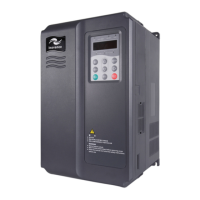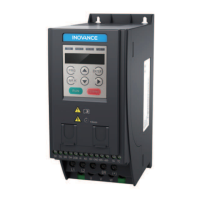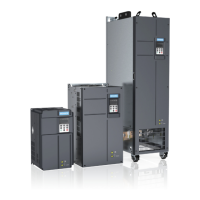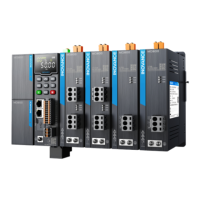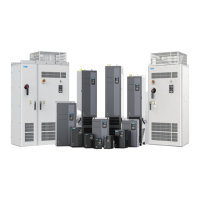Chapter 5 Function Code Table
- 88 -
Function
Code
Parameter Name Description Setting Range Default
F2.11
Oscillation
suppression gain
Set this parameter as small as possible in the
prerequisite of efcient oscillation suppression to avoid
inuence on V/F control.
Set it to 0 if the motor has no oscillation. Increase
the value properly only when the motor has obvious
oscillation. The larger the value is, the better the
oscillation suppression result will be.
When this function is enabled, the rated motor current
and no-load current must be correct. Otherwise, the V/
F oscillation suppression effect will not be satisfactory.
0, 100
Model
dependent
Group F3: Control Optimization Parameters
F3.00
DPWM
DPWM switchover
frequency upper
limit
It determines the digital pulse width modulation
(DPWM) pattern in V/F control.
When the output frequency is below the value of
F3.00, the 7-segment continuous modulation pattern is
used. When above the value of F3.00, the 5-segment
intermittent modulation pattern is used.
In the 7-segment continuous modulation pattern, the
switching loss is large but the current ripple is small.
In the 5-segment intermittent modulation pattern, the
switching loss is small but the current ripple is large.
It rarely need be modied because instable motor
running may result at high frequency.
For instability in V/F control, see the description of
F2.11. For the AC drive loss and temperature rise, for
the commissioning of F0.16.
5.00 Hz to max.
frequency (b1.02)
12.00 Hz
F3.01
PWM modulation
pattern
It is effective only for V/F control.
"Synchronous modulation" indicates that the carrier
frequency varies linearly with change of the output
frequency, ensuring that the ratio of carrier frequency to
output frequency remains unchanged.
It is applied when the drive's output frequency is high,
improving the quality of output voltage.
Synchronous modulation is not required at low
output frequency (100 Hz or below). This is because
asynchronous modulation is preferred when the ratio of
carrier frequency to output frequency is high.
Synchronous modulation takes effect when the
frequency reference is higher than 85 Hz. If below 85
Hz, asynchronous modulation is used.
0: Asynchronous modulation
1: Synchronous modulation
0, 1 0
